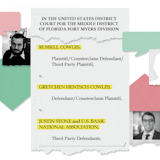Art Berman is a former Ameriprise Financial executive who joined nonprofit Twin Cities Rise in 2008. The organization's mission? Finding $20,000-plus-a year jobs for its talent pool of mainly minority men, most of whom have criminal backgrounds. Not an easy task at a time when the nation's unemployment rate hovers above 9 percent.
The program, also called TCR, was founded nearly 20 years ago by former General Mills executive Steve Rothschild. It enrolls several hundred trainees annually and invests up to 14 months on education, training and "personal empowerment" development.
Last month, Twin Cities Rise was one of five global winners of a $50,000 award from the eBay Foundation and Ashoka Changemakers that seeks "the most innovative market-based solutions that create economic opportunity and generate employment for disadvantaged populations."
QWhat does this award mean to TCR?
AIt's a huge validation of the work we do, our "pay-for-performance" model, and the cash award is very helpful. We want to leverage this award into more work, more funding and expanding the impact of our program.
QWhat's the business model?
ASteve Rothschild, years ago and working with state officials, was able to determine that "success" in terms of a successful placement of a graduate at Rise is worth $31,000 of financial value to Minnesota taxpayers in terms of subsidy the state no longer has to pay, the increased taxes our employed graduates pay and a lower prison recidivism rate. We serve a high percentage of ex-offenders. The recidivism rate in Minnesota is about 60 percent. Recidivism for our grads is about 12 percent.
The Legislature agreed to help fund us. We don't get outright grant funding as do other nonprofits. We get funded if we place somebody in a job that pays at least $20,000. We get $9,000. We get another $9,000 a year later if that person is still employed. So there's an opportunity of up to $18,000. The state wins and the people we serve win.



